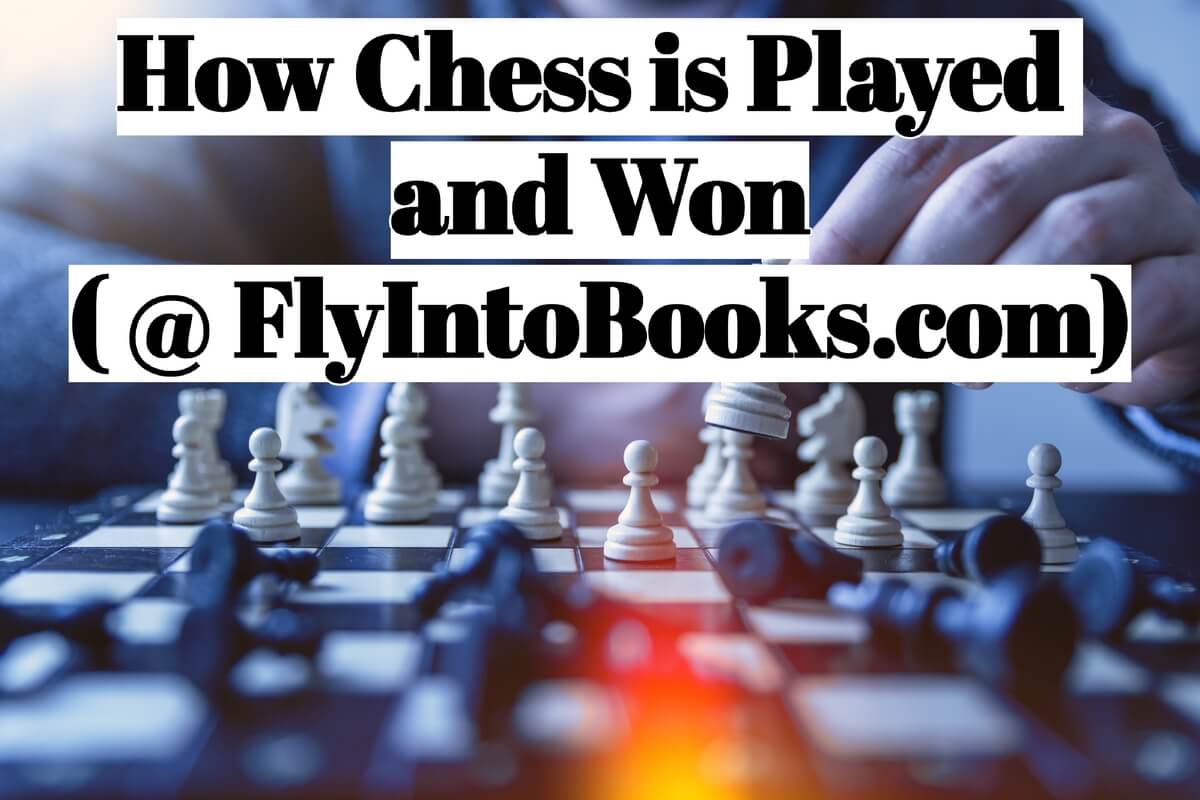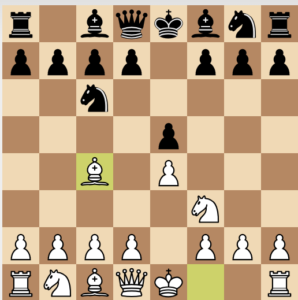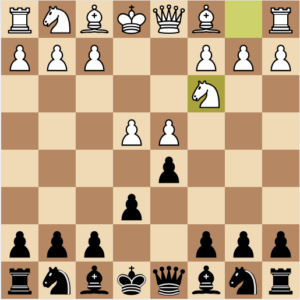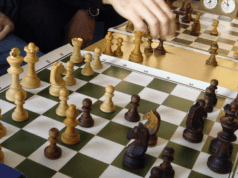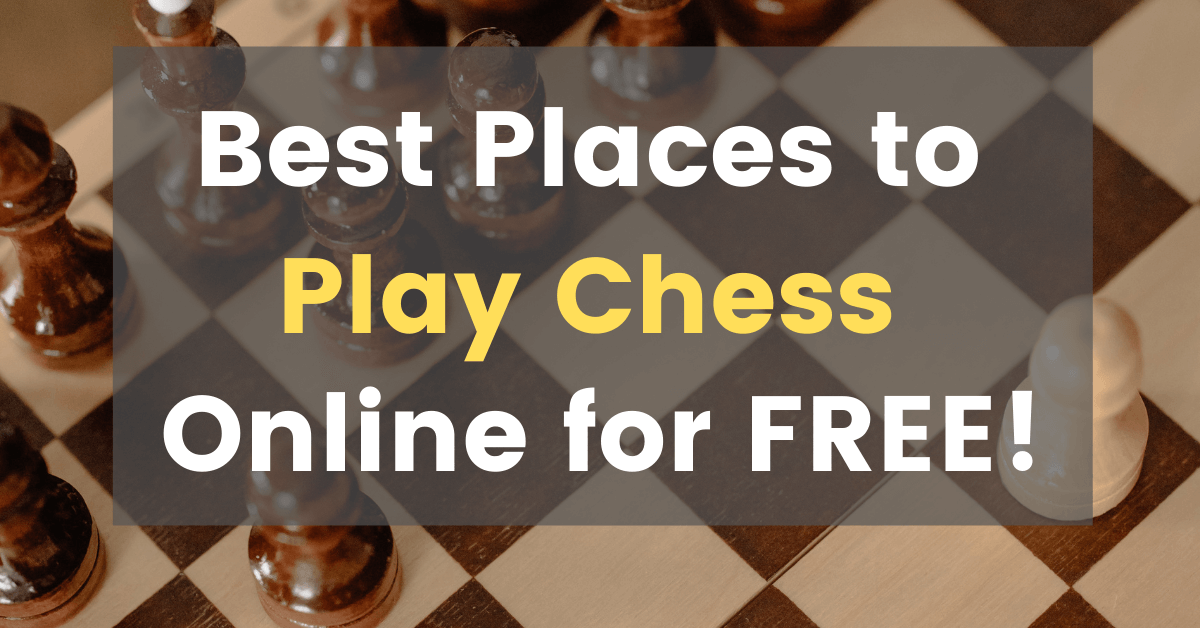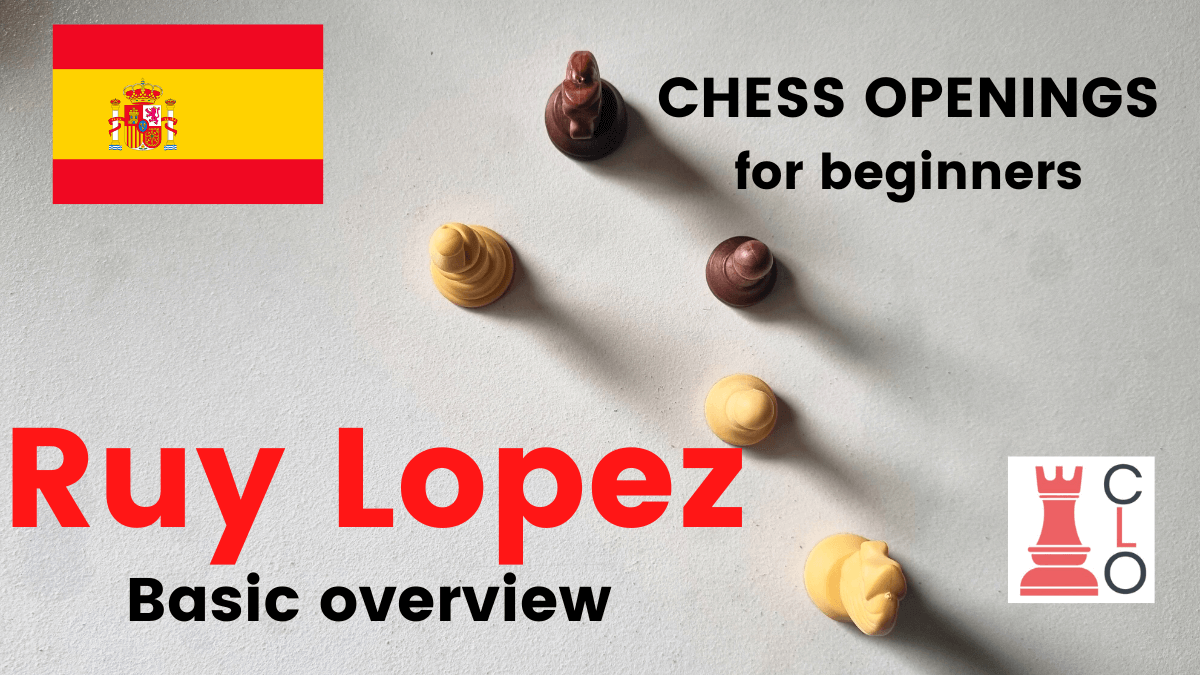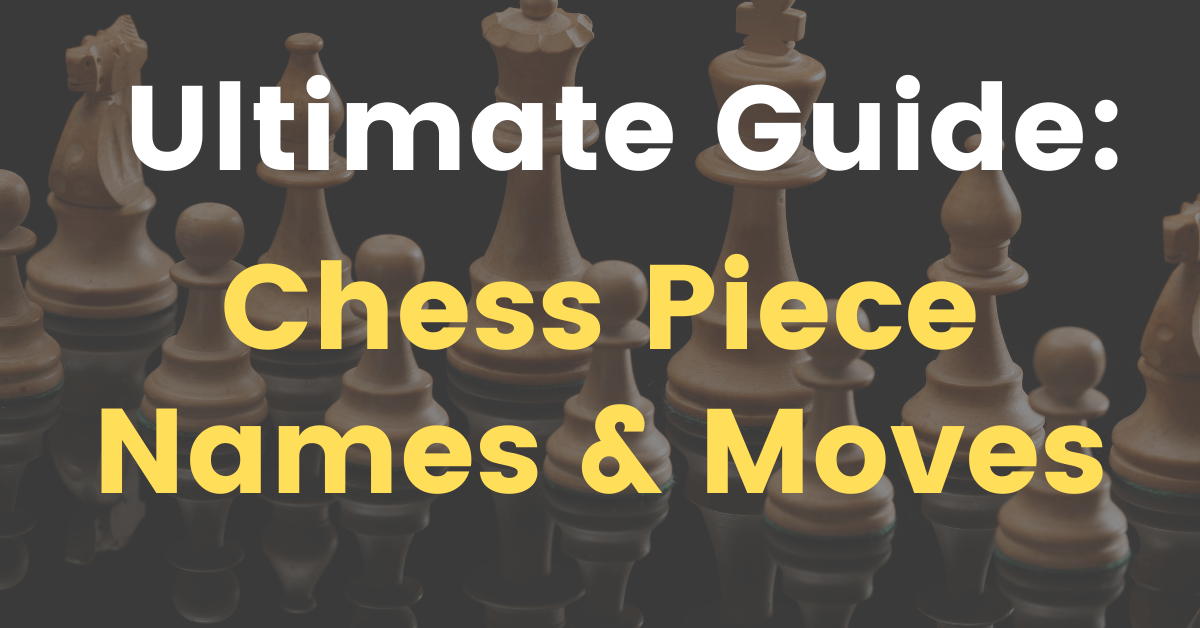Join our exclusive newsletter for opening guides, tips, and inspiration. Our community of 5,131+ chess enthusiasts is waiting for you.
Don't wait – enter your email below and join now!
How Chess is Played and Won!
Welcome to a new series in Chess Lovers Only‘s repertoire of exciting new ideas – How Chess is Played and Won by the best GMs in the world! In this new series, we are going to lay out the foundation for you to study and learn how to play chess in a way that will drastically improve your chess game!
After learning the basic chess moves, and learning a few chess tactics for beginners, the next thing you need to do is actually play and win some chess games!
But after trying out a few chess tactics and chess openings on your friends, you go out into the online world of chess only to get beaten again and again!
For you see that after getting past and winning against the newbies in chess, you get into the real world of chess. Here is where everyone knows your tricks of knight forks and the latest post-modern chess openings. Now, is where you really need to go down the path of learning how chess is played by looking at what the great GMs of chess do – and here at ChessLoversOnly, we have you covered!
You Might Also Like:
- Learn the Italian Game: the Best Chess Opening for White
- Learn the French Defense: in 3 Simple Steps!
- Learn the Chess Piece Names and How they Move: Ultimate Beginners Guide
Checkout the Best Chess Youtube Channels to see How Chess is Played:
There are some very good youtube channels out there that show you how chess is played, and also how to win in chess! I’ve been looking at a few of them for the past six months, and here is my list of chess of Youtubers you ought to know!
1. Hanging Pawns
This is probably the most useful youtube channel I have come across for learning and improving at chess! There are lots of videos about openings, middle game ideas, and now training games. Check it out!
2. ChessCoach IM Andras
This youtube channel also helped me a tonne in improving in chess. In particular, there are a few series he has that are very useful for beginners/intermediates in chess:
a) Inside My Mind
b) The Amateur’s Mind
c) Know Thy Classics
3. John Bartholomew
John is also an IM and he has a lot of useful videos where he plays games and explains what he is doing each move and why (similar to IM Andras’ Inside My Mind series). His best series is probably called: Climbing the Rating Ladder because it explains what each of people at different levels is doing wrong/right and how to improve your game.
4. Saint Louis Chess Club:
This chess club has a tonne of lecture series that teaches you how chess is played. It goes from beginner to intermediate to advanced level discussions. Some of the lectures get a bit long and therefore a bit boring, but if you hit on a lecture which you just need then it’s okay haha.
5. Others!
There is a tonne of others I’ve watched too! Too many to keep count.
But the three above I think are the best for improving your game and learning how chess is played.
Some others that are pretty good are the following:
a) Eric Rosen
b) Ben Finegold
c) GingerGM
d) ChessEdge
e) ChessNetwork
f) Kingscrusher
g) Chess.com
h) Chess Club and Scholastic Center of Atlanta
i) Chess to Progress
And there’s probably more I’m missing…
Leave me a comment if I missed something!
How to Understand and Play Chess Openings:
You need to understand how openings work, and not memorise the moves. There are too many variations and different moves that your opponent can do (that aren’t even part of the opening), so it’s good if you go through the opening in order to understand the ideas behind the moves instead. It’s also good to go through the main openings in order to understand that they exist.
After that, you need to look at the main ideas that each player wants to do in the openings too. This relates to strategy somewhat (e.g. pawn breaks, isolated pawn, etc.), so you need to learn about strategy too in order to learn how chess is played.
At the moment because of my level, I only want to try to remember only four moves deep for each opening – it gets too confusing if I go any deeper. However, there are a few openings I like to play. So for those ones I like to do deeper analysis if I lose a few games the same way, or I get into trouble during the opening in my game.
Here is the main openings and some videos for you to understand the main ideas and principles behind each:
A. The Main White Openings:
1. The Italian Game:
Moves:
1. e4 e5, 2. Nf3 Nc6, 3. Bc4
3. … Bc5 = “Giuco Piano”
>4. c3 (classical)
>4. 0-0 Kf6, 5. d4 (Deutz Gambit)
>4. b4 (Evan’s Gambit)
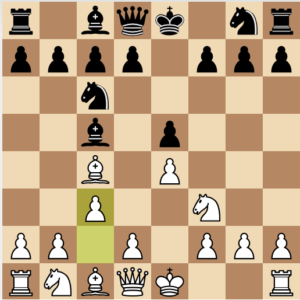
The Giuoco Piano Classical Variation
3. … Nf6 = “Two Knights Defense”
>4. d3 (modern bishop opening)
>4. Ng5 (Knight attack) leads to the (fried liver attack) and (Traxler counter-attack)
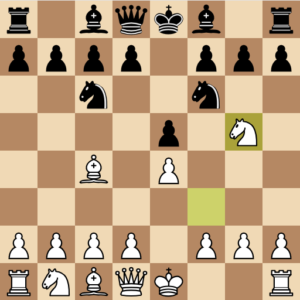
Knight Attack in the Two Knights Defense
3. … Be7 = “Hungarian Defense”
>4. d4 d6 (mainline)
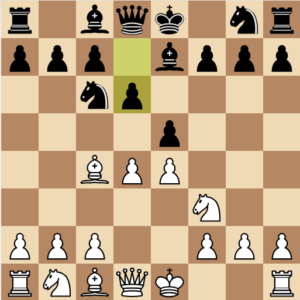
The Main Line of the Hungarian Defense
Instructional Videos for the Italian Game:
Italian Game Theory Playlist from Hanging Pawns
Giuoco Piano (Italian Game) Playlist from Hanging Pawns
B. The Main Black Openings:
The main openings for black are listed below. You can see that they are called defence because they attempt to equalise with white or create some kind of imbalance that can be used to the player’s advantage.
1. The French Defense:
Moves:
1. e4 e6
2. d4 d5
As soon as black plays e6 it becomes the French Defense. On turn two, most games follow in the fashion above – d4, d5 (over 90 per cent of games). There are a few other possibilities that people can play, but they will probably be not as good as this mainline.
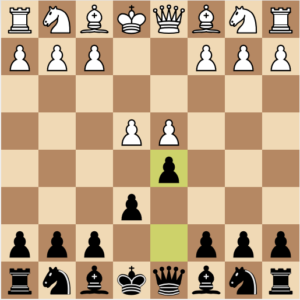
The French Defense
3. Nc3 = “Main Line”
>3. …Bb4 (Winawer Variation)
>3. …Nf6 (Classical Variation)
>3. …dxe4 (Rubinstein Variation)
Over 40 per cent of games are continued with 3. Nc3 so it’s worth knowing how chess is played with the variations above (e.g. the Winawer Variation).
3. Nd2 = “Tarrasch Variation”
>3. …c5; 4. exd5
>3. …Nf6 (Closing the centre)
>3. …Nc6 (Guimard Variation)
>3. …Be7 (Morozevich Variation)
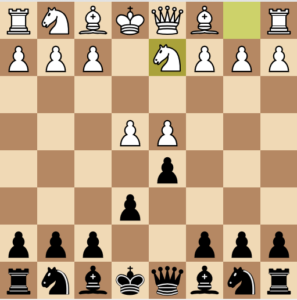
3. e5 = “Advance Variation”
>3. …c5, 4. c3 Nc6, 5. Nf3 (main line)
>>5. …Qb6 (increase pressure on d4)
>>5. …Bd7
>>5. …Nh6
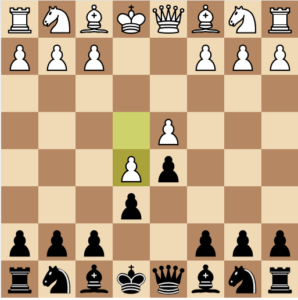
3. exd5 exd5 = “The Exchange Variation”
This opens up the position and creates a symmetrical position. Most of the time it could lead to a draw unless players shake it up a bit.
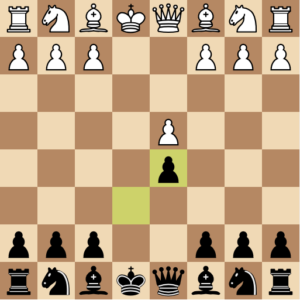
Instructional Videos for the French Defense:
French Defense Opening Theory from Hanging Pawns
French Defense from Hanging Pawns
Learn How Chess is Played in The Endgame
Once you started playing chess, you probably searched for endgames online and came up with the “overkill” mates – the mates where it’s pretty much impossible to lose. You only need to learn about two techniques: the staircase and the box, and you’re good to go!
Here are the basic “overkill” checkmates:
- King, Queen and Rook against a King
- King and Two Rooks against a King
- King and Queen against a King
- King and Rook against a King
There are some other basic endgames that are a little more difficult than the “overkill” checkmates, but you should still be able to win easily. There are no tricks here – you can study the pattern a little bit and just keep winning.
Here are the other basic endgames:
- King and Two Bishops (of opposite colours) against a King
- King, Bishop and Knight against a King
- King and Queen against King and Bishop
- King and Queen against King and Knight
There are also some endgames you need to know where it is impossible to win. These are the endgames you want to avoid because the game will end in a draw. No matter how hard you try there is no way to win.
Here are the drawn endgames:
- King and two Knights against a King
- King and Bishop against a King
- King and Knight against a King
But all the above is just for beginners. Once you start moving up the rating ladder, you really need to study more advanced endgames. Most experienced chess players already know the endgames above and won’t fall for your simple tricks. Here is where we start our real endgame study.
Two Great Books to Learn How Chess is Played in the Endgame:
There are two really great books for endgame study.
The first is Silman’s Complete Endgame Course: from Beginning to Master. This book is good because it shows you the real endgames you need to know depending on your level. The first few chapters deal with endgames described above (e.g. overkill mates) but as you get into the later chapter that is for higher rated players then he gets into more advanced endgames that will definitely improve your game!
Silman’s Complete Endgame Course deals with the following topics for endgames:
- Part One Endgames for Beginners (Unrated – 999)
- Overkill Mates
- The Staircase
- The Box
- Stalemates
- Part Two Endgames for Class “E” (1000-1199)
- Part Three Endgames for Class “D” (1200-1399)
- Part Four Endgames for Class “C” (1400-1599)
- Part Five Endgames for Class “B” (1600-1799)
- Part Six Endgames for Class “A” (1800-1999)
- Part Seven Endgames for Experts (2000-2199)
- Part Eight Endgames for Master (2200-2399)
- Part Nine Endgames for Pure Pleasure
So the best part of Silman’s Endgame course is that you can gradually go through the book and practice the endgames that he suggests for each level as you go up in rating. There are pretty important endgames that you must learn in order to get all the points you deserve (e.g. Rook endgames, the Lucena Position, the Philidor Position, and Bishops of Opposite Colors). So it is well worth getting the book in order to improve your game!
The other Endgame book to learn how chess is played in the endgame is 100 Endgames You Must Know: Vital Lessons for Every Chess Player by Jesus De La Villa.
Instead of going through all the endgames, you need to know by rating level or class, Jesus De La Villa instead chooses only the best endgames you must know in order to improve your game.
Inside 100 Endgames You Must Know there are the following chapters:
- Basic Endings
- Knight Vs Pawn
- Queen Vs Pawn
- Rook Vs Pawn
- Rook Vs 2 Pawns
- Same-Coloured Bishops
- Opposite-Coloured Bishops
- Rook + Pawn Vs Rook
- Rook + Two Pawns Vs Rook
- Pawn Endings
So, there would be some overlap with Silman’s Endgame course but Jesus De La Villa takes a more principled approach and deals with each endgame by type instead.
It’s important to work through these types of books, and play lots of games in order to work through the different types of endgames you might encounter. That way, you will be sure to deal with every kind of endgame and have lots of practice in order to keep winning and improving your game!
Learn How Chess is Played in the MiddleGame with Chess Tactics:
Everyone says that middle game tactics are the most important to study when you learn chess is played. However, after you learn the basic tactics like forks and pins, then every single player knows what you will do if they aren’t beginners.
The point of middle game tactics is tactical combinations inside the higher-level strategic structures that occur because of the openings that were played.
Often you can play a move that forks your opponents, but if he goes and checks or checkmates you on the next move then you will never be able to capture either of the pieces that you forked.
At the start of the game, everyone always pins their opponent’s knights to their queen or king. But then what? What do you do then?
Okay, so you know your basic level tactics, but you want to become stronger and learn how chess is played at the top levels. Then what do you do?
Are Openings More Important Than Tactics?
People say to practice tactics every day with certain websites or certain apps, but really you need to know which tactics are available in which pawn structures – and this depends on what kind of openings you play.
First, you need to choose a few openings that are above for each colour and just gradually learn how to play them by doing what? Playing them!
You need to play those openings to see what happens when you do this move and that move. Then go back to the theory and see what other ideas there were. Gradually your memory of the openings you play is going to get better and better. You know what moves to play in that opening because that happens in your games.
Then you need to work out the high-level strategies in those openings, which involve middle game ideas. For example, pawn breaks, isolated pawns, doubled pawns, how to create a past pawn, etc. These are the sort of ideas you need to focus on for tactics.
There might be some tactics that will surprise low-level players, but the real good players can see them too.
Of course, there are still the bread and butter of the chess world. Therefore, you do need to do them every day. But, they alone will not help you improve your chess. For that, you need to play lots of games in the different openings you want to specialise in and learn the different middle game ideas that arise from those openings. For example, closed openings/semi-closed openings/open openings. That is for the best.
Anyways, if you want to practice the middle game tactics, then the following resources I have found are the best.
Practice your Middle Game Tactics with the Following:
- Chess Coach Pro App on Android
- I found I like this app because it goes through each kind of tactics in very simple and fundamental terms
- Sometimes, the other ways to practice tactics are just so random and don’t let you consolidate your learning.
- But this app is so simple and gradually increases in diffifulty (easy, medium, hard) so that you can gradually get used to the different ways the basic tactics are used. It’s great.
- Chess King Learn App on Android
- This app is also very great because it goes through the tactics in a simple way, but allows you to make mistakes and then think again in order to find the correct moves.
- It also gradually gives you hints to why the move you took was wrong in order to help consolidate your learning and improve the ways you think about the tactical problems.
- They also have tonnes of different app with the giant Chess King Family so that you can gradually improve your game in various other ways.
- The apps I’m currently using in the Chess King Learn Family are a) Chess Tactics for Beginners, and b) Chess Endings for Beginners. Later on I want to grab the Chess Combinations Volumes because that’s where the real learning begins for Middle Game Tactics! It’s not the simple tactics we learn when we are a beginning, but instead how they are used together in order to achive a goal as part of a larger strategy to win the game.
- ChessTempo.com – website
- ChessTempo is a really great website, because all the tactics come real games played in the past.
- However, these tactics are so much harder than the other simplet tactic trainers. It also is pretty punitive in case you make a simple mistake.
- It would be a great tactics trainer, but it seems to go over my head at the head.
- I want to start at the basic with the other two apps above and then come back later to chesstempo.com because I would get a lot more out of it.
- Chesstempo.com is also pretty random in terms of what the solution is. There is no underlying principle to learn and just seems to be a bunch of random positions for you to practice, which I don’t use it much nowadays.
What Else is Needed to Learn How Chess is Played?
So, here is my massive spill on how chess is played and how to get better at the game. What do you think? Did I miss anything important? Did I get something wrong?
Well then, now it’s your turn! Let me know in the comments or the site’s contact me in order to let your voice be heard!
I will also make a lot more posts about chess in order to improve not only my own game but also my readers too!
Tell us what you desperately need and we’ll write a chess guide for it (for free)!
What should we write about next?
Let us know in the comment box below!
Or Contact Me here.
Cheers,
A.J. McMahon
.
.
.
Let’s Connect!
– Youtube: ChessLoversOnly
– Instagram: Chess.Lovers.Only
– Pinterest: ChessLoversOnly
– Facebook: ChessLoversOnly
– Twitter: @ChessLoversOnly


